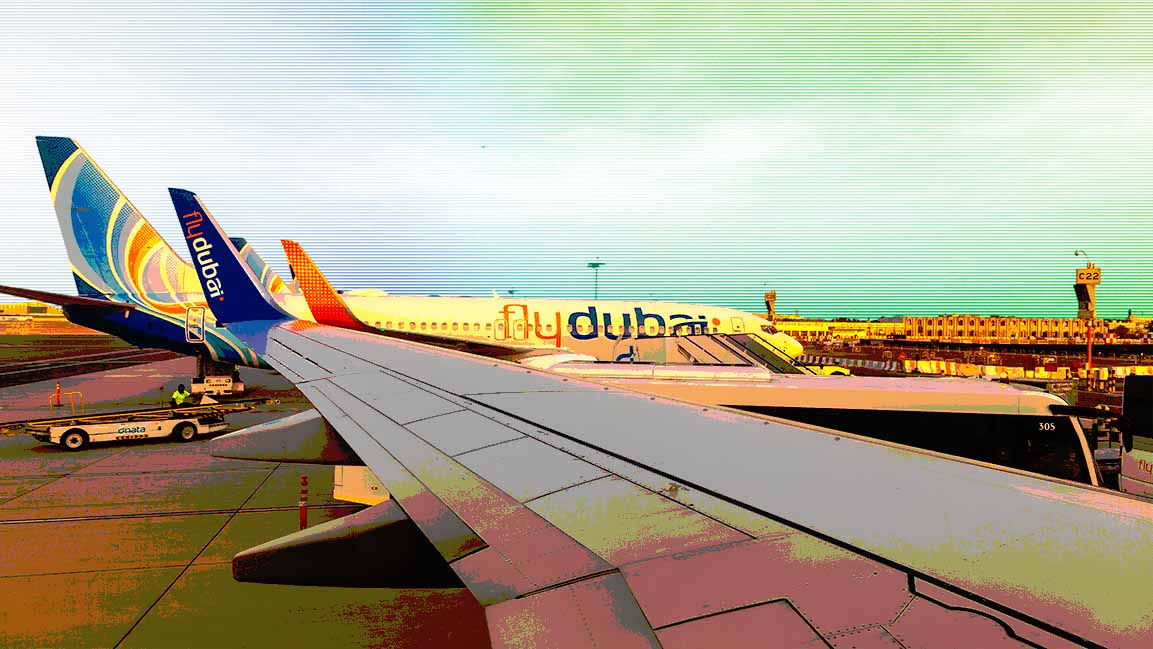- | 9:00 am
Why the budget airlines in the Middle East are winning big
As affordable flights become the norm, low-cost carriers are redefining not just pricing, but the experience

The Middle East was dominated by full-service carriers providing connectivity and top-tier amenities. Today, budget airlines have democratized air travel across the region, making it more accessible, without compromising on comfort, reliability, or connectivity.
Air Arabia, one of the region’s trailblazers, flew 18.8 million passengers in 2024, marking a 12% year-on-year surge. With 31 new routes and a strong 82% seat load factor, the Sharjah-based airline’s momentum is undeniable. The pace continued into 2025, with 4.9 million passengers flown in Q1 alone, and net profit jumping 34%.
Meanwhile, flydubai cemented its reputation as a powerhouse in regional connectivity. The airline carried 15.4 million passengers in 2024, an 11% increase, and posted its highest-ever annual revenue of about $3.48 billion, powered by a fleet of 88 aircraft flying to 131 destinations across the globe.
Even Wizz Air Abu Dhabi, the UAE’s youngest low-cost contender, soared to new heights with 3.5 million passengers in 2024, delivering over 4.4 million ultra-low-cost seats and recording a 20% year-on-year growth in flights operated.
THE VALUE PROPOSITION
Together, these airlines are expanding networks and reshaping the regional travel landscape. While affordability remains a core driver, the motivations behind choosing a budget airline today are far more nuanced.
“In the region, we’re seeing a shift,” says Pete Lysak, a principal consultant at Kollective, a consultancy that provides analytic tools that align organizations to the Voice of the Customer.
“We are talking about low-cost carriers, but a few regional airlines have blurred the lines. They call themselves low-cost but are actually hybrid models, offering some frills while still charging competitive fares.”
Lysak adds: “What distinguishes a standout low-cost carrier brand is how clearly it defines its value proposition and sticks to it. It’s not just about price. It’s about reliability, network strategy, and being ruthlessly efficient in how you serve your customer base.”
For many travelers, that efficiency resonates. Kareem Koubar, a Dubai-based digital strategist, says, “I enjoy flying budget airlines because they’re refreshingly direct. You pay for what you need. Nothing more, nothing less. The expectations are clear, and there’s something oddly comforting about that.”
Karthik Raghu, a frequent flyer based in Dubai, says: “I prefer budget airlines for regional flights over others. No fuss, user-friendly mobile applications. Ticket prices and time of travel play a big part.”
His perspective reflects a growing reality in the region. Whether for work, family, or a quick getaway, travelers choose value over excess, and budget airlines are redefining what air travel looks like in the Middle East.
Corona Fontana, a working mother based in Dubai, highlights the extended reach of LCCs as a key advantage. “More affordable, yes, but it’s also about access. These airlines reach cities that major carriers skip, and they often operate more efficient aircraft, lowering the carbon footprint. For me, that really matters.”
Accessibility is important for larger families. “It’s mostly because they’re more affordable—especially for families,” says Arfa Jabbar, a Dubai-based mother of three & a Learning Support Teacher in The Aquila School.“It just makes travel possible.”
For everyday travelers, one thing is clear: budget airlines in the Middle East are no longer a compromise but a conscious choice. By focusing on simplicity, cost transparency, and a consistent passenger experience, carriers like flyadeal and Wizz Air Abu Dhabi are redefining what it means to fly smart.
Lysak points out that the most successful low-cost carriers in the region aren’t trying to mimic full-service airlines—they are rewriting the rules.
“The branding, the onboard experience, the digital platforms—all align around the same promise: simplicity, affordability, and consistency.”
But that promise is evolving. There’s been a shift post-COVID.
Passengers aren’t just looking for cheap tickets anymore. Lysak says, “They want punctuality, good digital service, and increasing control over their journey—whether that’s booking a seat, tracking baggage, or changing flights on the app. The winners are the ones who understand that low-cost doesn’t mean low expectations.”
REGIONAL CONNECTIVITY
Another factor driving growth is regional connectivity. Historically, Gulf airlines focused on long-haul connections via mega hubs like Dubai and Doha. But now, LCCs are tapping into underserved secondary cities within the region and into South Asia, Central Asia, and North Africa. “That’s a huge opportunity. The demand is there—people want affordable, direct options without the detour,” Lysak.
Looking ahead, Lysak believes the market will become even more segmented. “We’ll start to see low-cost long-haul models take shape—maybe not immediately, but the seeds are there. We will also see more hybridization: premium economy-style seats on LCCs, dynamic pricing for add-ons, and smarter loyalty offerings.”
Still, he emphasizes that clarity is king. “The most valuable thing an LCC can do is stay true to its DNA. Know your customer and your cost base, and don’t try to be all things to everyone. That’s when you lose the edge.”
GAINING MARKET SHARE
According to Xavier Esparrich, a partner at PwC Middle East and the industry leader for aviation consulting, LCCs in the Middle East are gaining market share by offering “fit-for-purpose products at affordable prices,” thanks to lean operations and minimal overhead.
Unlike their European or American counterparts, many regional LCCs also provide semi-long-haul transit options, connecting Eastern Europe to the Indian Subcontinent via Middle Eastern hubs—a model Xavier calls “a unique strength in this market”.
He adds that while demand is strong, regional LCCs face operational headwinds. “Airport capacity is increasingly constrained across key GCC hubs, and LCCs often find themselves deprioritized in bilateral air service agreements,” he notes.
National carriers have the political and strategic advantage when negotiating slots and expanding routes. Xavier believes the outlook remains positive despite these barriers, especially where liberalization policies and infrastructure investment align with LCC models. “LCCs thrive in agile, deregulated environments. If governments are serious about growing passenger volumes and keeping fares accessible, then enabling low-cost carriers is essential.”






































